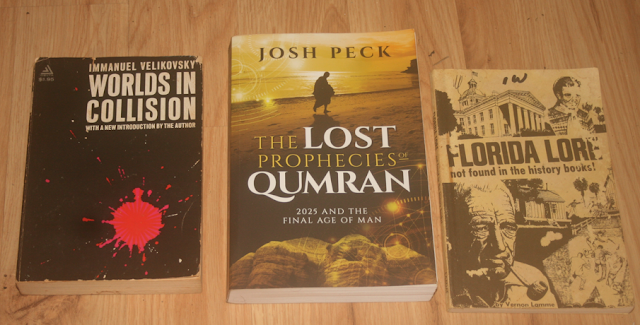Written by the TreasureGuide for the exclusive use of the Treasure Beaches Report.
 |
| 6000-Year-Old Skull and Human Remains Found in Cave. |
I have a different type of post today. I know it isn't what a lot of people are looking for, but to me it is interesting.
In Taiwan, there have been stories passed down through the generations about a tribe of short, dark-skinned people that once lived in mountainous parts of the island. But until now, there has been no physical evidence of them. In this new effort, the researchers found a skull and leg bones in a cave that have been dated back to approximately 6,000 years ago—a time before the ancestors of people alive on the island arrived...
The researchers suggest their findings confirm the existence of the ancient people on Taiwan but they do not explain what might have happened to them. They were apparently gone by the time other early Austronesian groups of people began arriving. The researchers also note that mention of small, dark-skinned people was made in documents from the Quin Dynasty, and all but one of the 16 Austronesian groups living in Taiwan today have stories that describe small, dark-skinned people who once lived in the mountains. Such tales differ, however, between groups, the researchers note, with some believing that the earlier people were ancestors of theirs. Others see them as former enemies. One group claims to have killed off the last of the ancient people 1,000 years ago...
6,000-year-old skull found in cave in Taiwan possibly confirms legend of Indigenous tribe (phys.org)
That story is a little like the one about the possibility of Mayan culture existing in Florida, except, the evidence of Mayans being in Florida has not been accepted by the general academic community as convincing.
There are those that do believe the Mayans colonized Florida and Georgia. Here is an excerpt from a web site that elaborates on that theory.
On December 21, 2011 architect and researcher Richard Thornton announced that an archaeological site near Brasstown Bald, Georgia's highest peak, could be a Mayan outpost. The archaeological community came out in force and dismissed his claim and stated there was "no evidence" of the Maya in Georgia. The fact is, there is plenty of evidence of a Mayan presence in Georgia and Florida and I will briefly present some of it here. (Read "Were the Maya Mining Gold in Georgia?" for a more in-depth version of this article including pictures of artifacts which support this argument.)
I stumbled upon this connection by asking a simple question: how did corn arrive in Florida before arriving anywhere else in the southeastern U.S. We know corn is a crop developed in Mexico. If it had come by land one would expect to find evidence of its cultivation in Texas, Louisiana, Mississippi and Alabama long before it arrived in south central Florida. Yet a site in Florida, called Fort Center near Lake Okeechobee, offers the earliest evidence of corn agriculture in the eastern United States. The archaeologist who excavated the site, William Sears, asserted in his book/archaeological report on Fort Center that it must have come from Central America. To me this was a logical conclusion and so I treated this archaeological site as the "scene of the crime," so-to-speak, and started my investigation as to who brought corn to Florida.
Interestingly, while researching the Lake Okeechobee area I noticed that Lake Okeechobee was originally named Lake Mayaimi. It took its name from a tribe of Indians named the Mayaimi who lived around the lake. (This is where the city of Miami gets its name.) The Spanish who first visited this area also noted two other tribes named Mayayuaka and Mayaka in the same area. So in the same place where the first evidence of corn agriculture was discovered we find tribes with "Maya" in their names. Interesting...
Here is that link.
More evidence of a Maya presence in Florida and Georgia | Maya In America
I always interested in how epistemology and cognitive science. Treasure hunting is very much about putting evidence together before and after making finds. That is one thing I like so much about it.
Here are three books I recently read. Two, I've mentioned in this blog before. They might seem to be unrelated, but Worlds In Collision provided useful insights that applied to the other two books.
 |
| Three Books That Share an Obscure Connection. |
Here is a summary of that book.
If you really want to know more about the Covid pandemic, here is one book I'd recommend. It provides a lot of good background leading up to the recent pandemic.
---
You know what they say about a bird in the hand. But here is what I say about it.
A bird in the hand....
makes a mess.
----\
Nothing new with the weather or beach conditions.
Good hunting,
TreasureGuide@comcast.net